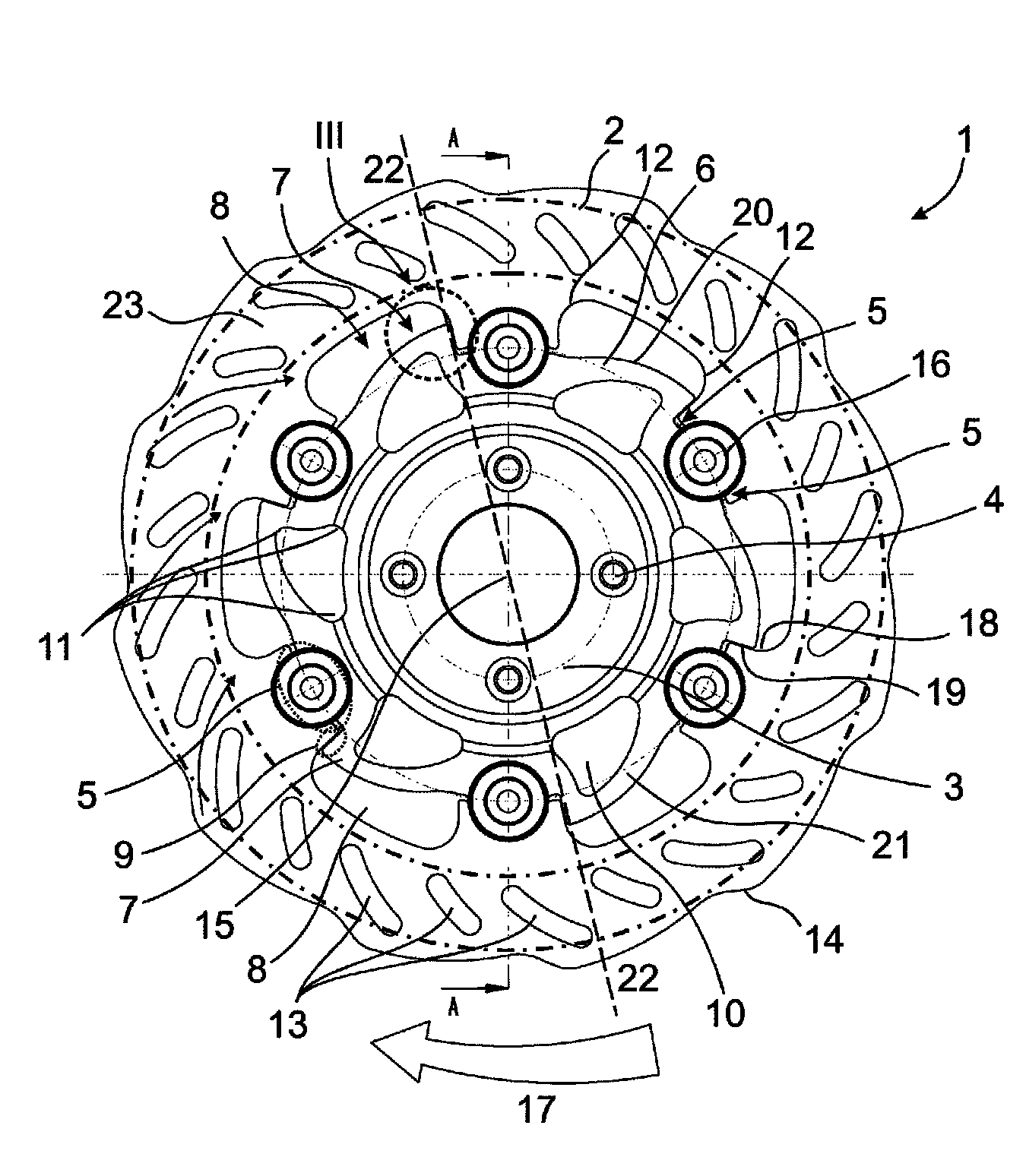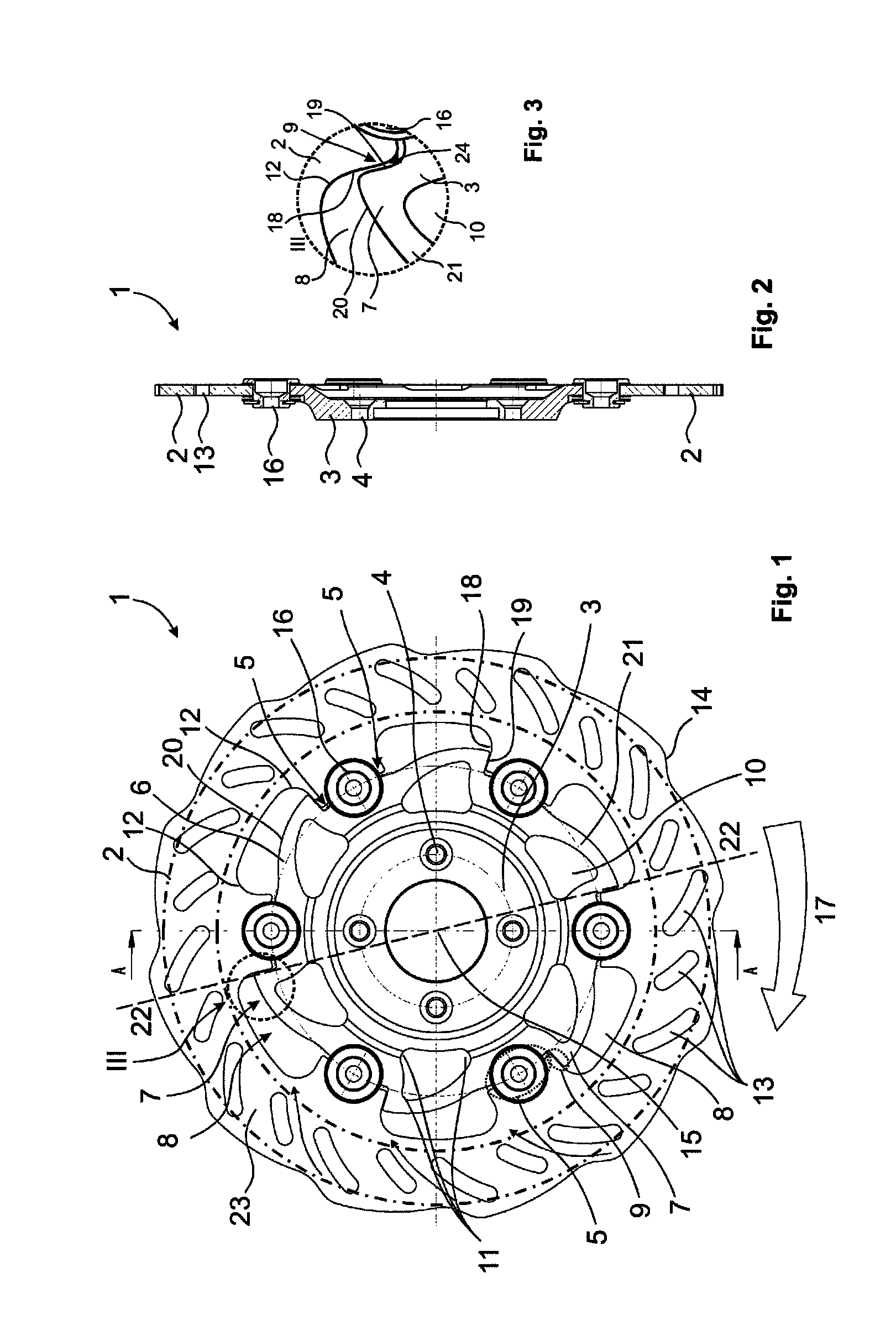Floating brake disc
a technology of brake discs and brake discs, which is applied in the direction of brake systems, railway braking systems, mechanical devices, etc., can solve the problems of brake disc breakage, to occur, connective devices are exposed to wear and tear, and manufacture is very expensive, so as to improve the flow of force, and reduce the overall wear of the brake dis
- Summary
- Abstract
- Description
- Claims
- Application Information
AI Technical Summary
Benefits of technology
Problems solved by technology
Method used
Image
Examples
Embodiment Construction
[0020]The invention and accompanying drawings will now be discussed in reference to the numerals provided therein so as to enable one skilled in the art to practice the present invention. The drawings and descriptions are exemplary of various aspects of the invention and are not intended to narrow the scope of the appended claims.
[0021]A floating brake disc 1 according to the invention is represented in FIGS. 1 and 2, whereas FIG. 3 shows the detail III in enlarged form. The brake disc represented is preferably intended for use in a motorcycle. It has an inner ring 3 and an outer ring 2. Located on the outer ring is the brake band 23, that is to say the region on which the brake pad of the vehicle's brake runs. The brake band is indicated in chain-dotted lines in the representation. Provided in the centre of the inner ring 3 are bores 4, via which coupling to a wheel of the vehicle takes place with the aid of fastening means (not represented).
[0022]According to the invention, a cont...
PUM
 Login to View More
Login to View More Abstract
Description
Claims
Application Information
 Login to View More
Login to View More - R&D
- Intellectual Property
- Life Sciences
- Materials
- Tech Scout
- Unparalleled Data Quality
- Higher Quality Content
- 60% Fewer Hallucinations
Browse by: Latest US Patents, China's latest patents, Technical Efficacy Thesaurus, Application Domain, Technology Topic, Popular Technical Reports.
© 2025 PatSnap. All rights reserved.Legal|Privacy policy|Modern Slavery Act Transparency Statement|Sitemap|About US| Contact US: help@patsnap.com


